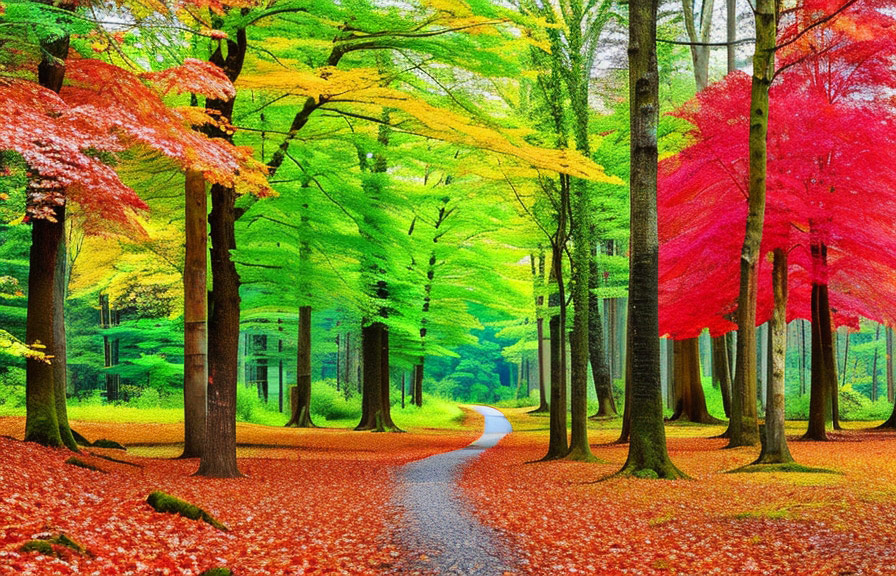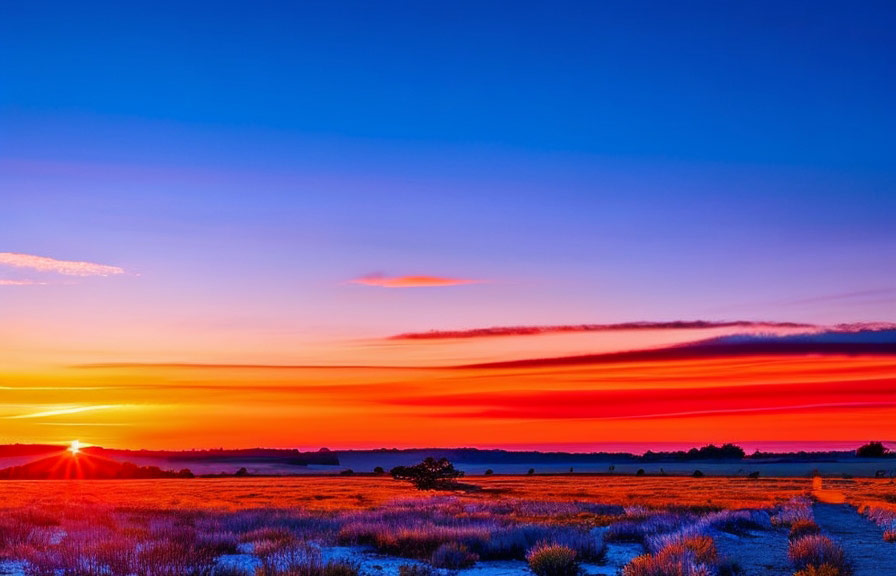Did you know that our brain perceives colors and symmetry as a visual treat? this is because our minds are hardwired to look for patterns, balance, and harmony. in landscape photography, utilizing colors and symmetry can greatly enhance the depth and perspective of your images, making them truly captivating.
In this post, we'll explore how to use these elements effectively to create stunning landscape photos.

Complementary colors: playing with depth and perspective
Using complementary colors in your landscape images can create a striking contrast, adding depth and perspective to your photos. complementary colors are those that are opposite each other on the color wheel. some examples are:
- Blue and orange
- Green and red
- Purple and yellow
When these colors are placed next to each other, they create a strong visual contrast that draws attention and enhances the depth of your image. to make the most out of complementary colors in landscape photography, you can:
1. look for natural occurrences of complementary colors in the scene, such as a blue sky against an orange sunset, or a green forest against red autumn leaves.
2. use filters or post-processing techniques to enhance the contrast of complementary colors in your image.
3. experiment with different times of day, as the quality and color of light changes throughout the day, creating opportunities for interesting color combinations.
Fun fact: did you know that the human eye is most sensitive to green light? this is because our eyes have more green cones than red or blue cones, allowing us to perceive a greater range of green hues.
This makes green a powerful color to use in landscape photography, as it can help create a sense of depth and perspective.
Symmetry: creating balance and harmony
Symmetry is a powerful tool to create balance and harmony in your landscape photos. the human eye is naturally drawn to symmetry, as it's easier for our brains to process and understand. there are several ways to incorporate symmetry in your landscape photography:
1. Reflections: use water bodies like lakes, rivers, or even puddles to create a mirror-like reflection of the landscape. this can create a beautiful symmetrical image, adding depth and perspective to the scene.
2. Leading lines: use natural or man-made lines to guide the viewer's eye through the image. leading lines can be roads, paths, fences, or even rows of trees. by placing these lines symmetrically in your image, you can create a sense of balance and depth.
3. Natural formations: look for symmetrical patterns in nature, such as mountain ranges, rock formations, or tree lines. by framing these elements symmetrically in your image, you can create a sense of harmony and balance.
A little-known fact about symmetry in photography is the concept of "dynamic symmetry." this is a compositional technique based on the golden ratio, a mathematical principle found throughout nature and art. when applied to photography, dynamic symmetry can help create a more engaging and visually pleasing image by placing key
Elements along lines and intersections dictated by the golden ratio.
Combining colors and symmetry: tips and tricks
To create truly captivating landscape images that emphasize depth and perspective, try combining the use of complementary colors and symmetry. here are some tips and tricks to help you achieve this:
1. Scout your locations: before heading out to shoot, research potential locations and look for opportunities to use colors and symmetry. this can save you time and help you plan your compositions more effectively.
2. Use a tripod: a tripod will help you compose your shots more precisely and ensure that your images are sharp and well-framed.
3. Experiment with different focal lengths: different focal lengths can change the perspective and depth of your images. try using wide-angle lenses to capture a more expansive view, or use telephoto lenses to compress the scene and emphasize depth.
4. Be patient: sometimes, the perfect combination of colors and symmetry may not be immediately apparent. be patient and wait for the right moment, whether it's the perfect lighting, a change in weather, or the appearance of a new element in the scene.
5. Post-processing: don't be afraid to use post-processing techniques to enhance the colors and symmetry in your images. adjustments such as color balance, saturation, and cropping can help you fine-tune your photos and create the desired effect.
Conclusion
Using colors and symmetry in landscape photography can significantly enhance the depth and perspective of your images. by understanding and applying these concepts, you can create visually stunning photos that showcase the beauty of the natural world.
So, go out,explore, and experiment with colors and symmetry in your landscape photography to capture truly breathtaking images that will captivate your audience.
Remember, practice makes perfect, and the more you experiment with different techniques and compositions, the better your understanding of colors and symmetry in landscape photography will become. with dedication and a keen eye for these visual elements, you'll soon be creating landscape photos that are not only visually striking but
Also rich in depth and perspective.
Now that you're armed with this knowledge, it's time to put it into action. head out into nature and start capturing the beauty of the world around you, using colors and symmetry to create truly memorable landscape images.
And don't forget to share your stunning photos with friends, family, and fellow photography enthusiasts to inspire them with your newfound expertise in utilizing color and symmetry to emphasize depth and perspective in landscape photography.
Happy shooting!
